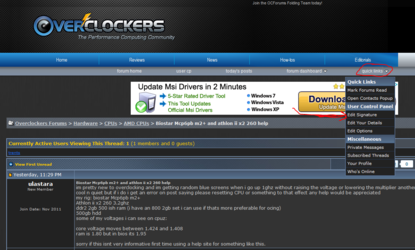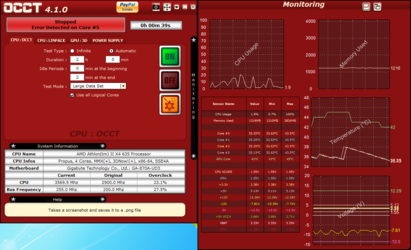1. You never advised us of completion of P95 nor at what speed, voltage etc, the pass might have occurred at.
2. For fan leads n0t long enough for me to get side of case off and completely out of the way, I put connectors in the wiring so I can open case side slightly and unplug the connectors I put in the wires themselves and move case cover out of the way. I have a NOTE on the side of the case that says "Hey stupid, remember the fan wires!!!", that way I don't tend to forget and snatch my side-cover off. I never enter the case except to clean dog hair out every 4 months or so and the n0te reminds me.
3. Are side fans going to help cool the MOSFETs? Don't know. Personally I doubt it, but only testing will say for sure. I do not care for side fans just blowing in my case disrupting other air-flow. Keyword = " I " don't.
I use something like this most of the time so I can get the AIR more nearly where I wish the air to be. I am sure there maybe other types out there. I am saying what " I " use. YMMV. Adding a NOTE: This bracket linked comes with a fan. Cheap with fan as without, BUT it can be had without fan at some locations. Once I have the bracket in hand...well then I can put smaller fan on the bracket if I want to and have 92mm fan for other uses. Suit one's ownself or whatever.
ZALMAN FB123 Video card fan
OCCT Perestroïka v4.1.0 Available !
This should go to the main English page. Buttons across the top for Home, News, Download, Forum (Closed), FAQ, and PRO (none available)
" I " use this because it has a number of tests. These tests are one's we already know, BUT the front-end for reach the tests IS oh so MUCH better than the individual tests by themselves.
1. The first test is Prime95 in a very easy to get to GUI. You can choose all cores. You can choose a specific TIME for the test to run and IF the test fails you can esaily see at what time the test fails, that is unless the test crash is so hard it reboots the computer.
2. The second test is another front-end for LinX/LipPack/IBT and again time for testing can be set as well as knowing when the crash happens unless the computer reboots.
There are other tests as well of which I have no knowledge since I have not used them. Like Video and Power Supply. I am n0t going there.
NOTE: I seldom say much about what to test with. Too many people want to come and put their dog or 2 cents in the race. I will only say this one thing. I have used this since version 0.99a way back there. I have used about 10 of the betas as they have come over the years. I still have the last beta on my hard drive and n0t yet the new one since I had not gone to the site in a while. I am n0t doing any testing right now.
NOTE2: I will be downloading the latest 4.1.0 version for "MY" use now that I know it is out of beta.
NOTE3: I did not see any pictures. Would have gotten some if I had seen them and am not going to other sites chasing pictures. The program setup is n0t rocket sciences.
RGone...ster.


